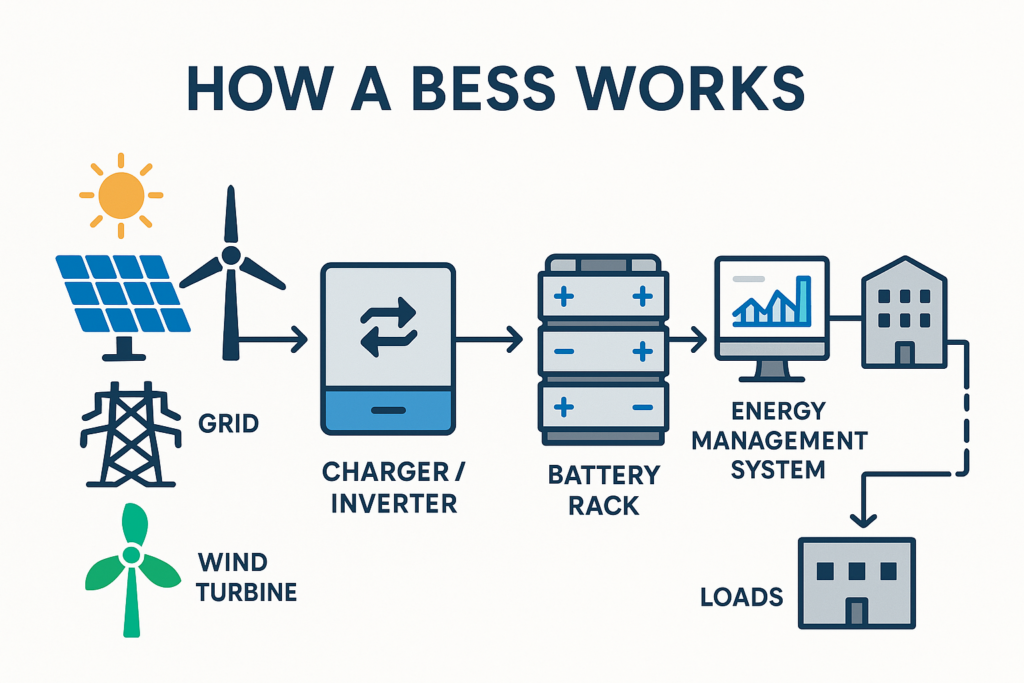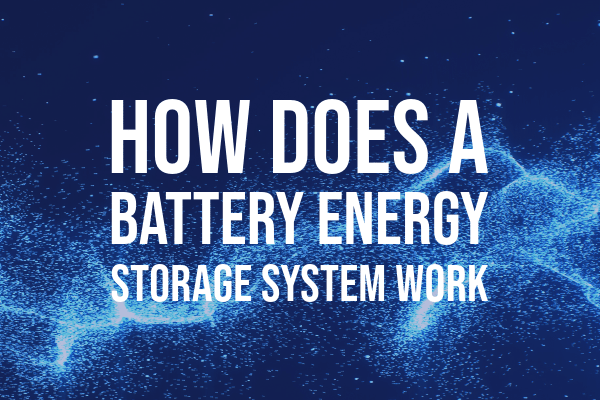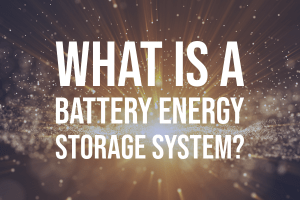A battery energy storage system (BESS) works by converting electrical energy into chemical energy during charging, storing it within batteries, and then converting the stored chemical energy back into electrical energy during discharge for later use.
Here’s how a typical battery energy storage system works:
Charging
During periods of excess electricity generation or low demand, such as when renewable energy sources like solar panels or wind turbines are producing more power than needed, the battery energy storage system charges the batteries. The excess electrical energy is converted into chemical energy and stored within the battery cells. In a prime-rated generator scenario, the system would not allow the generator to run in low-load scenarios and then start the generator during peak demand or changing times. This reduces overall fuel consumption.
Inverters
The battery energy storage system is equipped with inverters responsible for converting the direct current (DC) stored in the batteries into alternating current (AC), which is the form of electricity used to power most electrical devices and the electrical grid. In a Colorado Standby System that utilizes Victron equipment, the charger and inverter are the same devices.

Energy Dispatch (Discharging)
When there is an increased demand for electricity or a decrease in renewable energy production, the battery energy storage system is dispatched to release the stored energy. The stored chemical energy in the batteries is converted back into electrical energy (DC), and the inverters convert it to AC, which can then be used to power homes and businesses or be fed into the electrical grid.
Grid Stabilization
Battery energy storage systems can also provide ancillary services to the electrical grid, such as frequency regulation and voltage support. They can respond quickly to fluctuations in demand or supply, helping to stabilize the grid and ensure a reliable power supply, though this is an application typically used in commercial scenarios.
Time Shifting
Battery energy storage systems enable “time shifting” of energy. This means that excess energy generated during off-peak hours can be stored and used during peak demand periods, which helps balance electricity supply and demand, reducing the need for expensive peaker plants. This is particularly helpful in a solar system where the usage of electricity is low during the day when the sun is out but goes up at night when everyone is home.
Conclusion
When purchasing battery energy storage system products, it’s essential to consider factors like system capacity, voltage requirements, compatibility, warranty, and customer support. Consulting with experienced energy professionals, like our experts here at Colorado Standby, can be beneficial in selecting the right products and designing a BESS that suits your specific energy needs and application.
If you have any questions about battery energy storage systems, please contact us or browse our Victron Battery Energy Storage Systems. We offer FREE SHIPPING and expert customer support.








